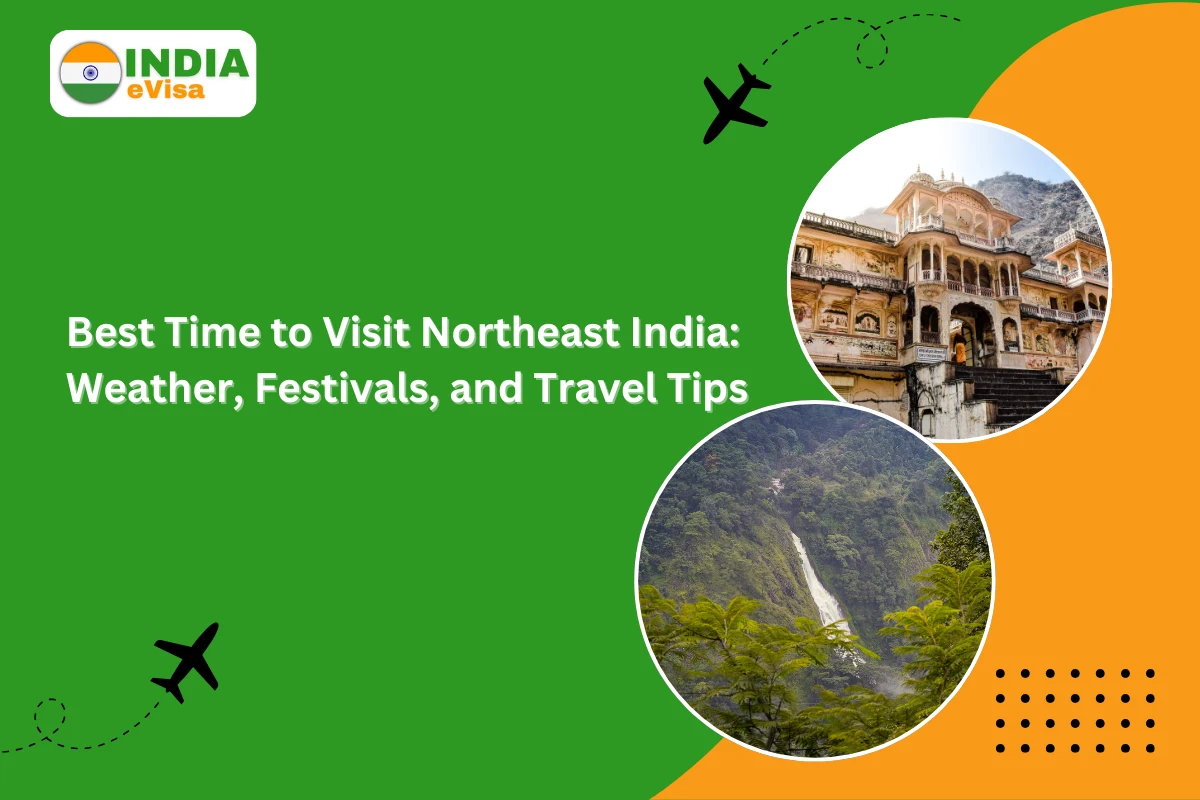Best Time to Visit Northeast India: Weather, Festivals, and Travel Tips

Deciding the best time to visit northeast india can feel confusing — the region is big, each state is different, and the weather changes fast. But don’t worry. In this guide I’ll walk you through the seasons, the main festivals, and clear travel tips so you can pick the best time to visit northeast india for the kind of trip you want. Read on and you’ll know when to go, what to pack, and how to plan for a smooth trip.
Northeast India is famous for hills, tea gardens, living root bridges, rivers, and tribal festivals. People often ask: when is the best time to visit northeast india for good weather and festival fun? The short answer: avoid the heavy monsoon months and pick spring, autumn, or winter depending on what you want to see. The broad monsoon months run from June to September and bring heavy rain and landslides in some places.
Spring — March to May: Flowers, clear skies, and friendly weather
Spring is one of the top choices for the best time to visit northeast india. Between March and May you get warm days, green hills, and bright tea gardens. This is great for trekking in places like Dzuko Valley and Ziro, and for photography when wildflowers bloom. If you love sunny days and fewer road problems than the monsoon months, pick spring.
Autumn — October to November: Fresh air and festivals
Many travellers say autumn is the best time to visit northeast india. After the monsoon, the air clears, waterfalls are full, and temperature is pleasant. This is also festival season in many states — for example, the Hornbill Festival in Nagaland is held in early December and is a big cultural draw. If you want both nature and culture, aim for October–December.
Winter — December to February: Cool days, possible snow in hills
Winter is perfect for lowland spots like Kaziranga (great for wildlife safaris) and for clear river views. High-altitude areas such as Tawang may get snow — so if seeing snow is on your list, winter can be the best time to visit northeast india. Do note that nights get cold and services in remote spots can be limited.
Monsoon — June to September: Very green, but travel can be hard
The monsoon turns the region lush and magical, but it is not usually the best time to visit northeast india for first-time travellers. Heavy rain can cause roadblocks, landslides, and closed trails. Some homestays and trekking routes shut down. If you love the dramatic green look and don’t mind rough travel, monsoon can still be an option — but check local weather updates first.
Festivals — Plan if you want local culture
Festivals make the trip special. Hornbill Festival (Nagaland) and Rongali Bihu (Assam) are two big events. Hornbill usually happens in early December and shows tribal dance, crafts, and music; Bihu celebrates the Assamese new year in mid-April. If you want to join a festival, arrange your tickets and rooms well in advance.
Practical travel tips (so your trip feels easy)
- Visa & paperwork: Before you travel check India Visa Online and confirm your India Visa Status early. Visa processing can take time, so apply well before your trip.
- Book for festivals: Hotels and flights fill up fast during festival periods like Hornbill.
- Pack layers: The hills are warm in the day and cold at night. A light jacket and a rain layer are musts.
- Cash & connectivity: Small villages may only take cash and phone signals can be weak. Carry extra cash and a power bank.
- Respect local ways: Ask before taking photos of people or sacred sites. A friendly hello goes a long way.
- Local guides: For treks or remote places, hire local guides — they know the trails, weather, and safe routes.
State-by-state quick guide
- Assam: Best from October to April for Kaziranga safaris and Majuli visits.
- Meghalaya: October–March is clear and good for visiting living root bridges and Cherrapunji viewpoints.
- Arunachal Pradesh: October–April is safer for road travel; winter brings snow to high towns like Tawang.
- Nagaland: December is famous for Hornbill; avoid the heavy monsoon months.
- Manipur, Mizoram, Tripura: October–March gives comfortable weather and many local festivals.
Health and safety
Carry basic medicines for stomach, fever, and allergies. If you plan longer treks, talk to local guides and consider travel insurance that covers evacuation. Check weather and road reports especially during the monsoon.
Final thoughts
If you want clear skies, festivals, and easy travel, plan for the best time to visit northeast india in spring (March–May) or autumn (October–December). If wildlife and river islands are your focus, winter months often work best. And before you go, make sure your India Visa Online application is complete and your India Visa Status is confirmed so nothing delays your trip. With a little planning, you’ll find the season that fits your travel style and come home with bright memories, new friends, and a fresh love for the hills and people of the northeast.
